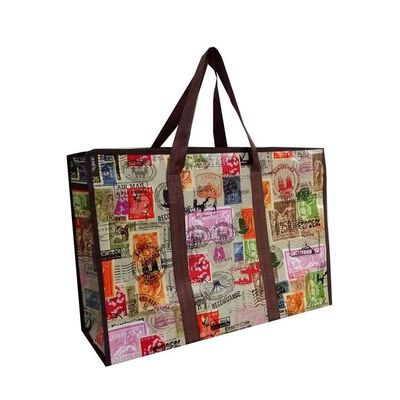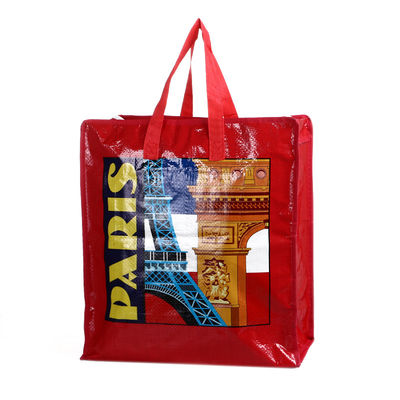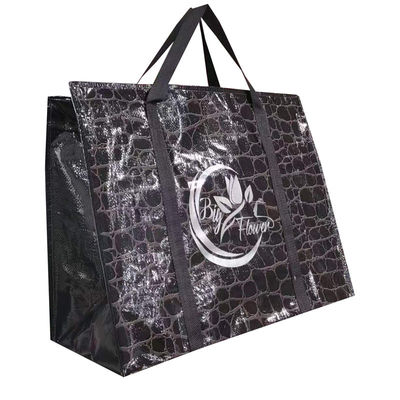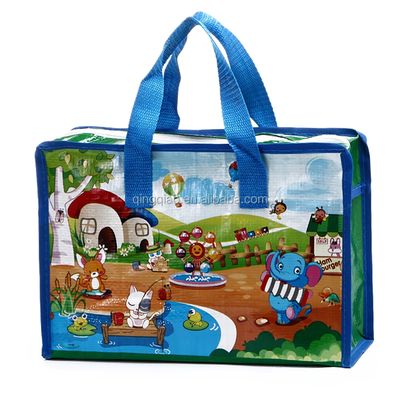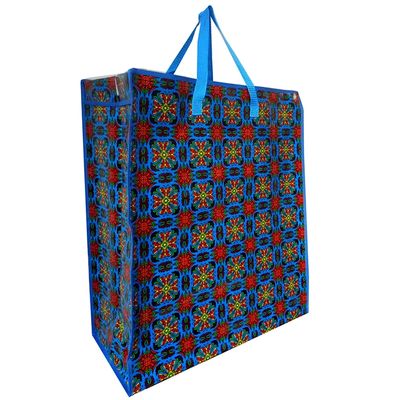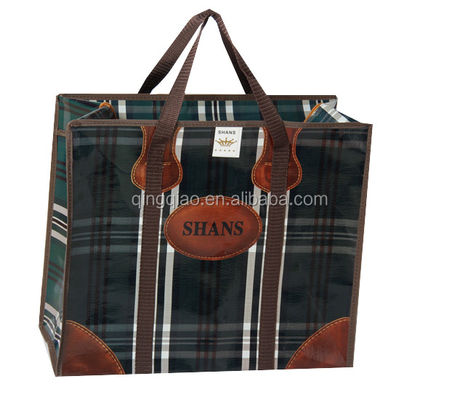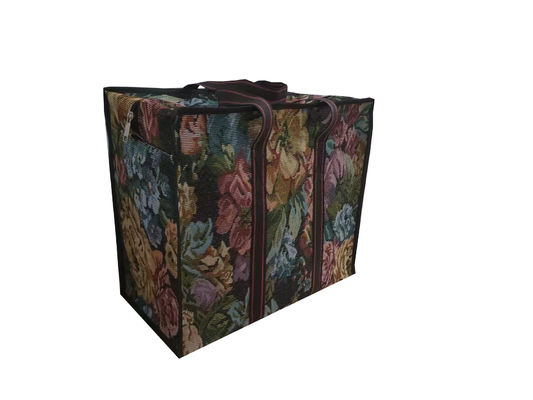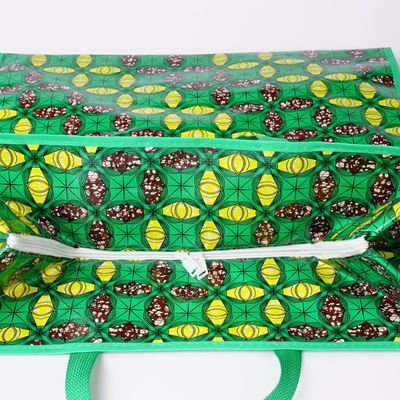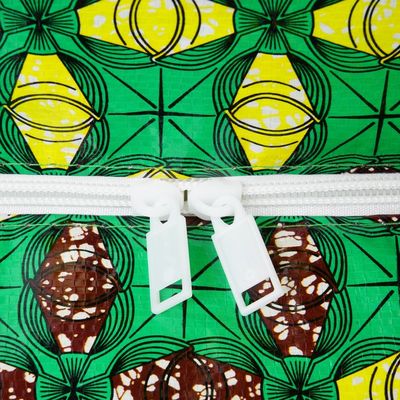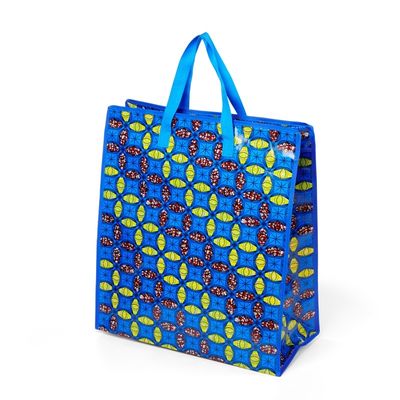The impact of non-woven bag material on load-bearing
The load-bearing performance of non-woven bags mainly depends on its material and production process. Here are some key messages:
Material selection
Weight of non-woven fabric: The load-bearing capacity of non-woven bags is closely related to the weight of the non-woven fabric used. The weight of non-woven fabrics refers to the weight of the fabric per square meter. The larger the weight number, the thicker the fabric and the stronger the load-bearing capacity. For example, a non-woven bag of 80 grams can bear a weight of less than 6 kilograms, while a non-woven bag of more than 100 grams can bear a weight of about 15 kilograms.
Selection of raw materials: The raw material of non-woven bags is mainly polypropylene (PP), which is a thermoplastic synthetic resin with excellent performance, chemical resistance, heat resistance, electrical insulation, high-strength mechanical properties and good high-performance Wear-resistant processing performance 9. These properties allow polypropylene to provide better load-bearing capacity when making non-woven bags.
The impact of manufacturing processes
Sewing and forking: Sewing non-woven bags have much stronger load-bearing performance than ultrasonic hot-melt non-woven bags. This is because the hot-melt non-woven bag only thermally bonds the non-woven fabrics together through high temperature, and all the force will be borne at a thermal melting point, so the load-bearing performance is not strong. The load-bearing performance of non-woven bags can be improved by sewing and making crosses on the handles.
Design of the handle: During the movement of the non-woven bag, most of the force will be borne by the four points of the handle. Therefore, the design of the handle has a great impact on the load-bearing performance. If the load-bearing performance of the handle is good and not easy to tear, then the load-bearing performance will be greatly enhanced.
Overall structural design: The overall structural design of the non-woven bag will also affect its load-bearing performance. For example, the design of connecting the handle to the bottom can significantly improve the load-bearing capacity of non-woven bags.
Usage and precautions
Proper use: The load-bearing capacity of non-woven bags is also related to their correct use. If the contents exceed the capacity of the bag, the non-woven bag will be damaged if the load is often overweight.
Storage and maintenance: If the non-woven bag is stored outdoors or indoors for a long time, it may also cause damage to the bag. In addition, if a non-woven bag is used to contain corrosive substances, it will also cause damage to the bag.
In summary, the material and production process of non-woven bags have an important impact on their load-bearing performance. Choosing non-woven fabrics with appropriate weight and raw materials, and adopting appropriate production processes and correct usage methods can effectively improve the load-bearing capacity of non-woven bags.
Comparative analysis of load-bearing capacity of non-woven bags and plastic bags
Load-bearing capacity of non-woven bags
The load-bearing capacity of non-woven bags varies depending on the material and production process. Generally speaking, non-woven bags can bear a weight of about 10 kg6
. If you want to improve the load-bearing capacity of non-woven bags, you can improve the production process, such as using non-woven bags for sewing, or during exercise
Bring the portable car to the bottom of the bag or around the bag to disperse the center of gravity and increase the load-bearing performance6.
Plastic bag load-bearing capacity
The load-bearing capacity of a plastic bag depends on its thickness and production process. In order to save costs, traditional plastic shopping bags are often made of thin materials and are easily damaged. But if
In order to improve the load-bearing capacity, it is necessary to increase the cost 5. Modern plastic shopping bags are usually made using a blow molding process, which makes the plastic
The bag is stronger.
Comparison of load-bearing capacity
The comparison of load-bearing capacity between non-woven bags and plastic bags mainly depends on their production process and materials. Non-woven bags may not be as good in load-bearing capacity
Plastic bags, especially if they are of the same thickness 810. However, by improving the production process, the load-bearing capacity of non-woven bags can be significantly improved6. In addition, the price of non-woven bags is usually higher, but their service life is long. One non-woven shopping bag can be worth hundreds or even thousands of plastic bags.
in conclusion
To sum up, the comparison in load-bearing capacity between non-woven bags and plastic bags is not absolute. Although non-woven bags may have a low load-bearing capacity in the initial state, their load-bearing capacity can be improved by improving the production process. At the same time, non-woven bags have a long service life and their overall performance may be better than single-use plastic bags in the long run. Therefore, when choosing a shopping bag, you should consider its overall performance, including load-bearing capacity, durability, environmental protection and other factors.
Comparison of durability between non-woven bags and plastic bags
Durability of non-woven bags
Non-woven bags, also known as non-woven bags, are a green product that are tough and durable. They are usually made of polypropylene (PP)
, which is the main polymer component of synthetic plastics. The durability of non-woven bags depends on their quality and manufacturing process. High-quality non-woven bags can withstand
It can withstand a certain amount of weight and pressure and is not easily damaged or disconnected. In addition, non-woven bags can be reused and should be properly disposed of after disposal to
Reduce environmental pollution.
Plastic bag durability
Plastic bags, usually made of high-pressure polyethylene (PE), have the advantages of being lightweight, non-flammable, easy to decompose, non-toxic and non-irritating. However, traditional
Plastic bags degrade slowly in the natural environment and easily form white pollution. In recent years, due to the increase in environmental awareness, the use of plastic bags has been
To overcome restrictions, some alternatives such as non-woven bags, paper bags and biodegradable plastic bags have become popular.
Comparison of durability of non-woven bags and plastic bags
Although non-woven bags are similar to cloth in appearance and some properties, their main raw material is polypropylene (PP), which is still essentially a plastic product. Nonwoven
The durability of cloth bags is no less than that of plastic bags, but in actual use, due to the thin material and easy breakage, they often cannot be reused, which makes them not significantly better than plastic bags in terms of durability. In contrast, if non-woven bags can be effectively reused and properly disposed of after disposal, their durability will be even more outstanding.
in conclusion
To sum up, non-woven bags and plastic bags each have their own advantages in terms of durability. Due to their tough and durable properties, non-woven bags can withstand a certain amount of weight and pressure and are not easily damaged or opened. However, in actual use, due to problems with materials and manufacturing processes, the durability of non-woven bags is not significantly better than plastic bags. To be truly environmentally friendly, non-woven bags should be reused as much as possible and properly disposed of after disposal. In this way, their durability will help reduce environmental pollution.
International views on the environmental performance of non-woven bags
Environmental performance of non-woven bags
Non-woven bags are considered to be environmentally friendly products internationally. The main reason is that they can be reused and can decompose naturally within 90 days after the end of their service life without causing pollution to the environment. The raw material of non-woven bags is non-woven fabric, which is a kind of fabric that can be formed without spinning or weaving. The short textile fibers or filaments are oriented or randomly arranged to form a fiber mesh structure, and then using machinery, Reinforced by thermal bonding or chemical methods. Non-woven bags are moisture-proof, breathable, flexible, lightweight, non-combustible, easy to decompose, non-toxic and non-irritating, rich in color, low in price, and recyclable.
Controversy over environmental performance
Although non-woven bags are widely regarded as an environmentally friendly choice, there is also some controversy and skepticism. On the one hand, the raw material of non-woven bags is mainly polypropylene (PP). Although this material can be effectively degraded, in the natural environment, its degradation process may be as slow as traditional plastic bags. In addition, the production of non-woven bags A large amount of industrial wastewater and waste gas may be discharged during the process, which is also a potential pollution to the environment.
International Standards and Regulation
There are clear international standards and requirements for the environmental protection performance of non-woven bags. For example, European standards are formulated by the European Standardization Committee Technical Committee CENTC120 on non-woven bags. The secretariat of the committee is served by the Dutch Standardization Institute NNI. This standard is formulated in accordance with environmental protection principles. These standards ensure that non-woven bags are produced in and minimize the impact on the environment during use.
The impact of user behavior on environmental performance
The environmental performance of non-woven bags depends largely on the user's usage habits. If consumers can reuse non-woven bags and dispose of them correctly after their service life, then its environmental value can be reflected. However, if a non-woven bag is discarded randomly, it may become less environmentally friendly than a regular plastic bag that is recyclable and easy to crush and recycle.
To sum up, the international community has a positive attitude towards the environmental protection performance of non-woven bags and believes that it is an environmentally friendly alternative to traditional plastic bags. However, it is also recognized that there may be some environmental impacts during the production and use of non-woven bags, thus emphasizing the importance of correct use and disposal to realize their environmental potential. At the same time, the role of international standards and regulatory agencies is also ensuring that the environmental performance of non-woven bags is fully guaranteed.
Comparison of international environmental protection standards for non-woven bags
Environmental protection standards for non-woven bags
The environmental protection standards of non-woven bags mainly involve the materials, production process and safety of the final product of non-woven bags. Internationally, non-woven bags
Environmental protection standards mainly include the following aspects:
Material safety: The material safety of non-woven bags is one of the primary criteria. There are clear international standards for the lead content of non-woven bags. For example, the lead content of environmentally friendly bags cannot exceed 100ppm. This is because heavy metals such as lead are potentially harmful to human health, and excessive amounts of lead may cause great harm to the human body.
Environmental protection during the production process: The production process of non-woven bags also needs to comply with environmental protection standards. For example, the production process of non-woven fabrics needs to minimize environmental pollution, including the emission of industrial wastewater and industrial waste gas.
Product safety: Non-woven bags also need to ensure the safety of users during use. For example, non-woven bags need to have sufficient strength and toughness when loading goods to prevent breakage or damage during use.
Comparison between non-woven bags, plastic bags and paper bags
In terms of environmental protection performance, non-woven bags have certain advantages over plastic bags and paper bags. Non-woven bags can be reused more than 10 times, and the environmental pollution after disposal is only 10% of that of plastic bags. In addition, the manufacturing process of non-woven bags uses a spray molding process instead of a blow molding process for plastic bags, which makes the non-woven bags stronger and more durable.
International inspection standards for non-woven bags
The international inspection standards for non-woven bags are formulated by the European Committee for Standardization's 120th Technical Committee on Non-Woven Bags CENTC120. The specific inspection standards are not given in the search results. However, it can be speculated that these standards may cover requirements for material safety, environmental protection during production and product safety.
in conclusion
To sum up, international non-woven bag environmental standards mainly focus on material safety, environmental protection during the production process and product safety. When choosing non-woven bags, consumers and merchants should ensure that the product meets these standards to ensure the safety and environmental performance of the product. At the same time, the advantages of non-woven bags in terms of reuse and durability make them an ideal substitute for plastic bags and paper bags.

 Your message must be between 20-3,000 characters!
Your message must be between 20-3,000 characters! Please check your E-mail!
Please check your E-mail!  Your message must be between 20-3,000 characters!
Your message must be between 20-3,000 characters! Please check your E-mail!
Please check your E-mail! 
